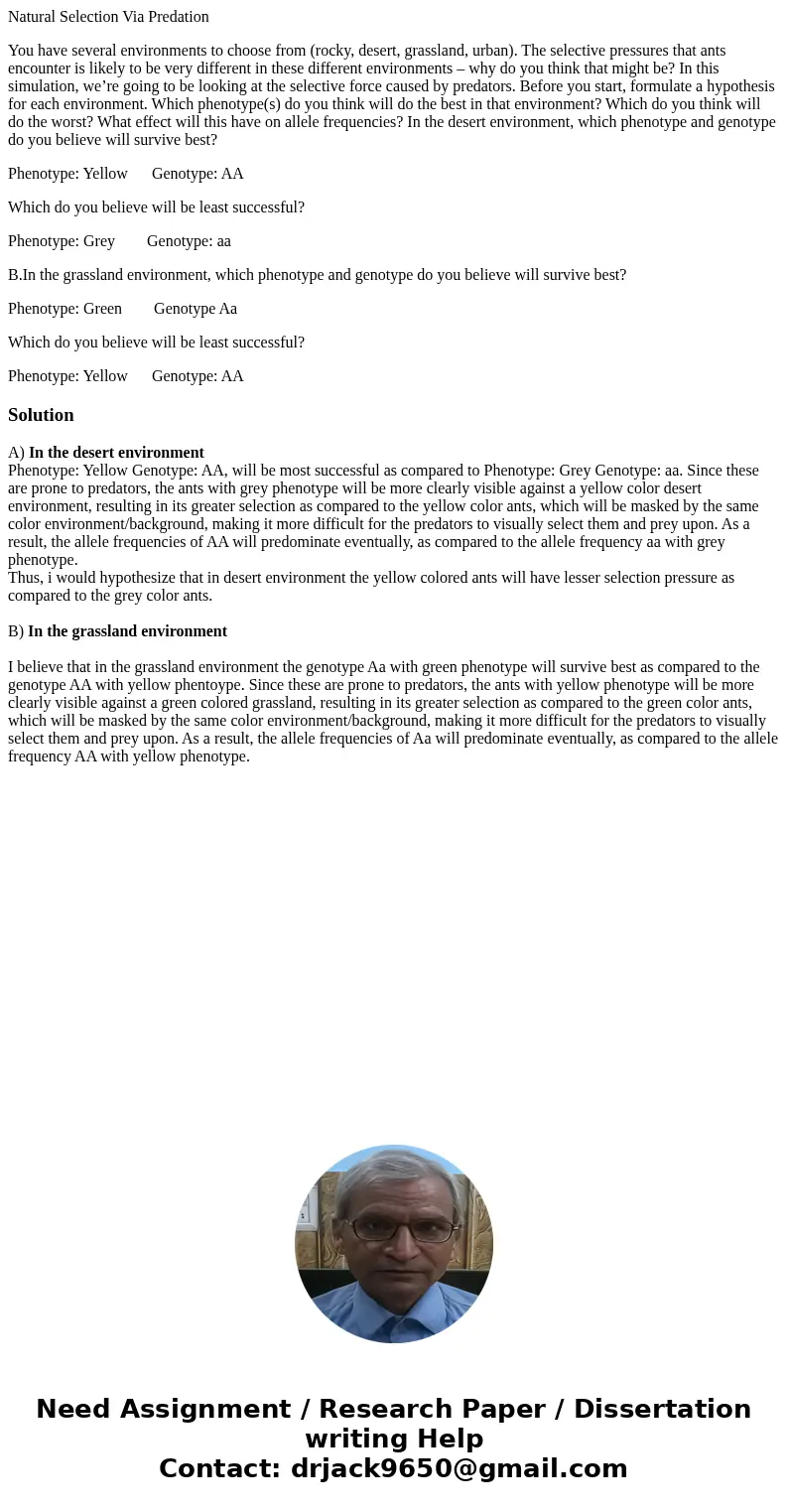Natural Selection Via Predation You have several environment
Natural Selection Via Predation
You have several environments to choose from (rocky, desert, grassland, urban). The selective pressures that ants encounter is likely to be very different in these different environments – why do you think that might be? In this simulation, we’re going to be looking at the selective force caused by predators. Before you start, formulate a hypothesis for each environment. Which phenotype(s) do you think will do the best in that environment? Which do you think will do the worst? What effect will this have on allele frequencies? In the desert environment, which phenotype and genotype do you believe will survive best?
Phenotype: Yellow Genotype: AA
Which do you believe will be least successful?
Phenotype: Grey Genotype: aa
B.In the grassland environment, which phenotype and genotype do you believe will survive best?
Phenotype: Green Genotype Aa
Which do you believe will be least successful?
Phenotype: Yellow Genotype: AA
Solution
A) In the desert environment
Phenotype: Yellow Genotype: AA, will be most successful as compared to Phenotype: Grey Genotype: aa. Since these are prone to predators, the ants with grey phenotype will be more clearly visible against a yellow color desert environment, resulting in its greater selection as compared to the yellow color ants, which will be masked by the same color environment/background, making it more difficult for the predators to visually select them and prey upon. As a result, the allele frequencies of AA will predominate eventually, as compared to the allele frequency aa with grey phenotype.
Thus, i would hypothesize that in desert environment the yellow colored ants will have lesser selection pressure as compared to the grey color ants.
B) In the grassland environment
I believe that in the grassland environment the genotype Aa with green phenotype will survive best as compared to the genotype AA with yellow phentoype. Since these are prone to predators, the ants with yellow phenotype will be more clearly visible against a green colored grassland, resulting in its greater selection as compared to the green color ants, which will be masked by the same color environment/background, making it more difficult for the predators to visually select them and prey upon. As a result, the allele frequencies of Aa will predominate eventually, as compared to the allele frequency AA with yellow phenotype.

 Homework Sourse
Homework Sourse